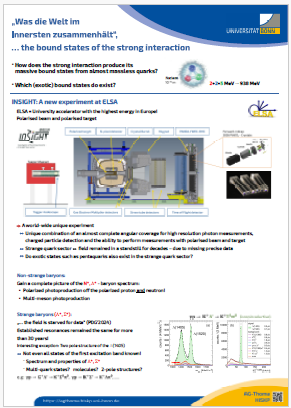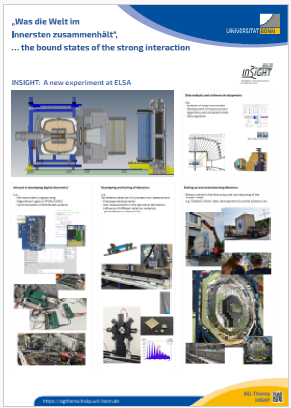Theses Topics
Possible topics for Bachelor and Master theses in our research group reach from developing, testing and building detectors for the coming new INSIGHT experiment at ELSA to the development of analysis and simulation software for the presently running CBELSA/TAPS and future INSIGHT experiment. In addition, interesting data analysis topics based on existing CBELSA/TAPS data are offered.
If you are interested in a Bachelor or Master thesis within one of our research projects, please do not hesitate to contact us.

|

|
